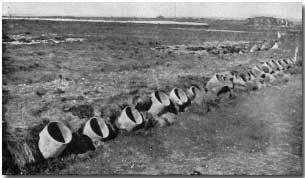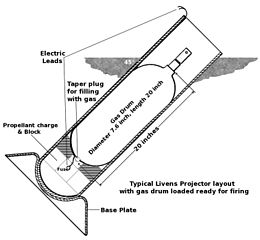Several months back, he put out a video wherein he likened Liberal theories of economics to a toy train set, cleverly illustrating - or so he reckoned - how out-of-touch and abstract our world-view is.
Anyway, a minute or so in he draws a contrast between the laborious, British preparation for the Somme offensive in 1916 and Patton's dynamic "style" of "leadership" post D-day. I'd offer more info but it's not germane because... Bill Whittle is an idiot.
In Bill's analogy, the Republicans resemble Old Blood and (other people's) Guts with their bold, innovative, world-changing ideas while the Democrats are just following doctrinaire strategy with zero innovation - like the Brits of 1916.
Like I said; he's an idiot.
 Anyone possessed of any knowledge of the Great War whatsoever knows that every action was different.
Anyone possessed of any knowledge of the Great War whatsoever knows that every action was different.Well, not really that different in that virtually all attacks were doomed to failure and if they were successful, even the rare taking of enemy trenches was generally short lived.
Every action involved lots and lots of dead and maimed folks whether the plan worked or not.
Every assault also had it's own special gadgets to try out and the big green-wienie pictured above is one of them.
Four of these were set up on the Somme but only two got to play. The other two were destroyed before the big day.
So what the hell was it? A huge secret for one thing - and just plain huge; fifty feet long, two-and-a-half tons heavy.
It's inventor was Captain William Howard Livens.
He was a Cambridge-educated engineer who enlisted the day war was declared but remained relatively uninvolved; at least until the sinking of the Lusitania.
It seems his fiance was supposed to have been aboard that fateful day and when he got word of the sinking, he assumed the worst.
Livens vowed vengeance on Germany even though he found out later that his betrothed missed the boat and was alive. He was going to kill some Germans.
The thinking cap he put on led him to ponder ways of delivering poison gas - or flame to the enemy more expeditiously.
The early flamethrowers were heavy, unreliable and dangerous in the extreme.
The British had no luck with their smaller flamethrowers, partly because their choice of propellant gas, either nitrogen (so called) or (mostly) "de-oxygenated" air, would ignite the fuel prematurely.
Livens' invention, the Livens Large Gallery Flame Projector, posed no such hazard.
Let's examine this thing. From the left: First off, a row of compressed-air cylinders. That would be the propellant gas.
Air lines coming from them feed into the rear end of the beast's spine; a segmented length of 14" pipe, topped by five, fuel tanks.
Along with supporting the center of the device, this length of pipe, acted as a large cylinder not unlike the body of a syringe.
The tube was filled from the tanks above with the fuel mix, a valve was opened and compressed air pushed a piston against the oil, pushing it toward the business end of this monster where awaited a nozzle with an oxy/acetylene igniter.
It was just a big squirt-gun but safe because the propellant and the fuel made no contact.
But wait. Where is all this happening, certainly not out in the open?
The word, "gallery" in the description refers to an underground gallery. a tunnel.
Said tunnel would be dug up to within range of the German trenches and the Projector would be brought down piece by piece, entailing working parties of two to three hundred.
Then the fuel, a mixture of kerosene and fuel oil, was carried down in three-gallon cans, one at a time to fill the tanks.
When all was ready and the critical moment arrived, hydraulics would raise the monster's armored head, punching up through the dirt and... This would happen.
My figuring yields that fifty feet of tube at fourteen inches diameter amounted to around eighty gallons, all expended over a ten-second... squirt.
The squirt-gun could be loaded and discharged two more times from the tanks before that long procession of three-gallon cans would have to resume.
Did it work though, for those three squirts?
Hell yes. In the places they were used significant British gains were made. Nothing like dousing the enemy with fire before going over.
It would even work for dugouts; either burning them or suffocating the inhabitants.
Thing was:
It was all a bit much. A bit too cumbersome, expensive, heavy and - did I mention the three-gallon oil cans?
It took seventy-five of them, along with 5000 pounds of machinery - all of which had to be piss-anted through tunnels - just to get set up.
And it had to be within 50 to 100 yards of the German front line to be effective.
So, heavy on infrastructure, vulnerable to destruction prior to deployment and a huge pain-in-the-butt from the beginning...
It wants a second act.
One day Livens pondered this and wondered if the oil could be delivered to the Germans in an un-ignited state and somehow lit afire upon arrival.
He cast his eyes about and saw - of all things - one of those same three-gallon oil cans. When he realized that said can would fit nicely inside one of the twenty-gallon fuel tanks that were mentioned above as being part of the projector, he thought: "Ya know what a guy could do...".
He had the tank buried in the ground at a forty-five degree angle, pointed toward the Germans.
He rigged a fuse and tossed in a few ounces of black powder followed by a wooden disc, included to spread the initial impact of the firing charge as well as help seal the gap around the can.
Then the can, which he'd filled with "Persian distillate" topped it off.
The hoped-for conflagration was to be triggered by an oily rag tied to the handle of the can which ignited upon firing.
Well, it was a flaming success and the Livens Projector was born.
Industrial strength Molotov cocktail for the slower students.
This is the kind of brain-dead, butt-simple innovation that keeps things moving forward in our modern world.
Of course this demonstration was nothing but a test of the concept and really didn't break much new ground, innovation-wise.
This is an old idea, originally known as the fougasse.
But, the best ideas are often the old ideas.
The diagram shows a typical projector - at least what it had quickly evolved into: A welded steel tube eight inches in diameter, welded shut at one end and fitted with a base-plate (Called "the sombrero").
The drum, as it was called held either the flame mixture or one of various gases, poisonous and otherwise - with conventional fusing and bursting charges as needed.
Often they would deploy "stink agents" (Great name for a punk-band) to fool the other side into putting on their masks and freaking out.
Meanwhile you'd simply go over-the-top unencumbered by any masks or gas hysteria ,and only barely grossed-out by the smell of bone-oil - it being the Western Front in high summer and a place where nasty smells would be commonplace... I would think.
Sadly, bone-oil doesn't seem to available as a product anymore but apparently you can home-brew some.
It wasn't just the magic of Dippel's wonderful stink-oil that made this so brilliant. The projectors were used mostly to deliver phosgene gas but here's the beauty part: They were so cheap, you could have a lot of them.
It got even better when Livens got clever.
Now; as any idiot can see... this thing's a mortar.
But no... If that were the case then it would be a "gun" and would therefore fall under the department of ordnance where guns were allotted, relative to caliber, so many to a given length of front and so on.
There were also different transportation headaches accruing to a unit of artillery which were done away with by simply ordering engineering supplies instead.
No. These were projectors - not firearms at all.
The result of this vaguely random, slightly sly undertaking was that, at Vimy Ridge, 2000 were set up in a crescent above Arras.
Cheap, simple, reliable and you can as many as you want.
 |
| Lacks a little of the dash of the ARTY, don't you think? |
- "a simple weapon which does not aspire to great accuracy. Its range is limited to about 1,800 yards; the noise of firing is very loud, and at night is accompanied by a vivid flash.
- Projectors are the principal armament of C.W. companies, RE."











